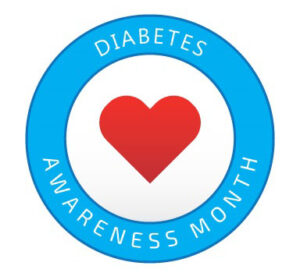Kick-Start 2022 with Healthy Eating Habits!
By Beth Kitzis, MEd, RDN, LDN
In January, 1 in 4 Americans will start the year off with a resolution. Topping the list of resolutions are to eat more healthfully or lose weight – more than 50% of all New Year’s resolutions involve weight loss. The diet and weight loss industry, fully aware of these trends, are about to flood our social media feeds and televisions with advertisements for quick fix weight loss programs and fad diets. Many people wonder how to wade through the weight loss messaging and find a sustainable way to eat more healthfully in the new year. The following are some tips to help you develop long-term healthier eating habits.
year off with a resolution. Topping the list of resolutions are to eat more healthfully or lose weight – more than 50% of all New Year’s resolutions involve weight loss. The diet and weight loss industry, fully aware of these trends, are about to flood our social media feeds and televisions with advertisements for quick fix weight loss programs and fad diets. Many people wonder how to wade through the weight loss messaging and find a sustainable way to eat more healthfully in the new year. The following are some tips to help you develop long-term healthier eating habits.
First let’s define a fad diet. A fad diet is typically one that promises quick weight loss. Most of these diets do so by eliminating important sources of nutrition such as grains or certain fruits and vegetables. Some also claim magical thinking around specific foods such as sweet potatoes, while demonizing others such as legumes. There are hundreds of fad diets available, but one thing they all have in common is that they promise a quick fix to what is really a lifelong journey of health. Many produce fast results but are unsustainable for the long term. However, research studies of people who have lost weight and kept it off show that sustainability is the key to long-term success.
Realistic lifestyle change involves finding eating habits that support overall health in addition to weight loss. Research has shown that among people who have lost weight (at least 10 pounds) and kept it off for at least 5 years, there is one common factor: continued success involves eating high quality nutritious foods with an emphasis on fruits, vegetables, whole grains, and lean meats. These eating patterns also minimize consumption of sugar-sweetened beverages (such as sodas), processed foods, and refined grains. There is no one size fits all dietary approach that will work for everyone, but nearly all successful and maintainable weight loss can be attributed to healthy eating patterns that were lower in calories overall while being higher on the Healthy Eating Index.
Wondering how to get started? Slowly incorporate healthier eating habits. By picking one or two goals per month, many people find that they can achieve success and stick with these changes. A small goal could include adding in 1 fruit and 1 vegetable serving to each day, committing to 150 minutes of exercise each week, or aiming for 25 grams of fiber per day. Working with a registered dietitian is another great way to get help choosing goals and finding ways to maintain change.
As you are being inundated with ads for the latest diet that promises rapid weight loss, remember that if it sounds too good to be true, it probably is. And lifelong healthy eating and sustained weight loss is just that — lifelong.


 Year’s with a curated portfolio of new,
Year’s with a curated portfolio of new,  at Community Servings wanted to take this opportunity to discuss why this day dedicated to raising awareness for AIDS is so meaningful to us. If you are familiar with Community Servings, you may know that we provide food for people with critical and chronic illnesses across Massachusetts. Not just food – nutritionally-appropriate medically tailored meals for people experiencing diabetes, chronic kidney disease, cardiovascular diseases, and more.
at Community Servings wanted to take this opportunity to discuss why this day dedicated to raising awareness for AIDS is so meaningful to us. If you are familiar with Community Servings, you may know that we provide food for people with critical and chronic illnesses across Massachusetts. Not just food – nutritionally-appropriate medically tailored meals for people experiencing diabetes, chronic kidney disease, cardiovascular diseases, and more. apple picking, pumpkin carving, and leaf peeping! With the temperature dropping every day, it’s also the perfect opportunity to incorporate hearty fall staples, such as squash, sweet potato, and brussels sprouts, into your dishes.
apple picking, pumpkin carving, and leaf peeping! With the temperature dropping every day, it’s also the perfect opportunity to incorporate hearty fall staples, such as squash, sweet potato, and brussels sprouts, into your dishes. and one in ten adults worldwide is living with diabetes?
and one in ten adults worldwide is living with diabetes? With fall in full swing, we’re gearing up for our annual Pie in the Sky bake sale…and we’re looking for pie sellers! In its 29th year, we rely on an army of 500+ pie sellers to help raise critical funding that will allow us to feed thousands of critically and chronically ill individuals and their families across Massachusetts. With a variety of pies on the menu – apple, pumpkin, pecan, and more – each pie provides one week’s worth of meals for a Community Servings client.
With fall in full swing, we’re gearing up for our annual Pie in the Sky bake sale…and we’re looking for pie sellers! In its 29th year, we rely on an army of 500+ pie sellers to help raise critical funding that will allow us to feed thousands of critically and chronically ill individuals and their families across Massachusetts. With a variety of pies on the menu – apple, pumpkin, pecan, and more – each pie provides one week’s worth of meals for a Community Servings client. Want to see something really creepy this Halloween? Check the nutrition label of your favorite sweet. There’s not a whole lot in there besides sugar! With so much sugar-loaded candy available to kids and adults alike, it can be a tricky time of year to eat healthily.
Want to see something really creepy this Halloween? Check the nutrition label of your favorite sweet. There’s not a whole lot in there besides sugar! With so much sugar-loaded candy available to kids and adults alike, it can be a tricky time of year to eat healthily.

